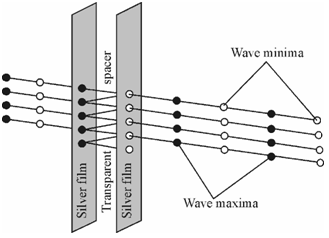Wavelength Selectors:
The low-cost instruments designed for routine determinations are easy filter fluorimeters. Such instruments are used while it is enough to measure fluorescence intensity at a single excitation and emission wavelength. These employ fixed filters to isolate both the excitation and emission wavelengths. In sequence to isolate one particular wavelength from a source what we required is just a pair of cut-off filters. Absorption filters are comprised of a correctly absorbing substance or substances dispersed in gelatin, plastic or glass. The filter fluorimeters are used basically in environmental field screening, hospital or clinical settings and other applications within that low cost and small size are crucial.
Presently, interference filters having high transmission (≈ 40%) over a narrow range (10 - 15 nm) of wavelengths have become available. Today it is probable to purchase filters providing the maximum transmission at any desired wavelength. Interference filters consist of a thin transparent layer of CaF2 or MgF2 sandwiched among parallel, partially reflecting metal films. A portion of the radiation entering the filter is reflected back and forth among the two metallic films constituting the filter.

Figure: Schematic diagram of an interference filter used in fluorescence measurements